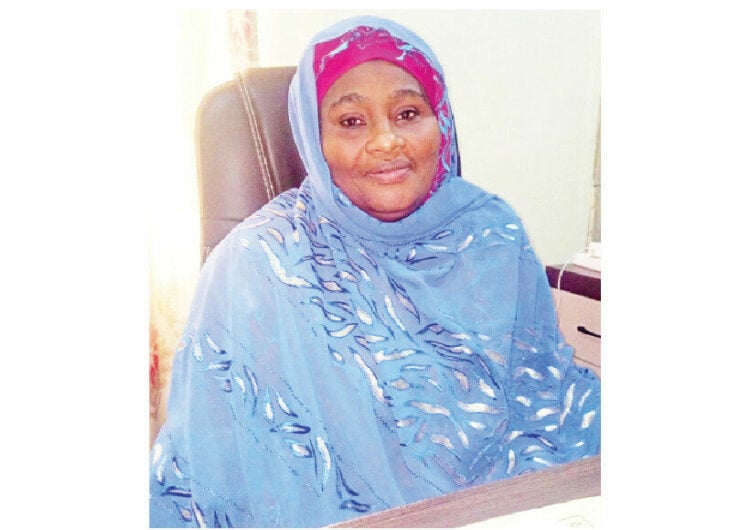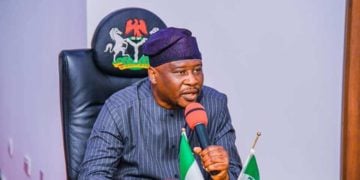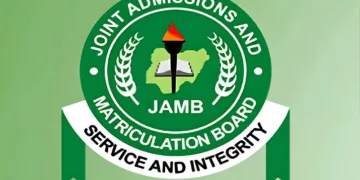Give us an overview of the TEST project and standout achievements so far?
The TESS initiative is supported by the World Bank and has been running for the past two half years under the administration of His Excellency Mallam Umaru Dikko Radda
The TEST project is people-ownedit is designed to directly impact communities by improving schools, empowering teachers, and uplifting students. At its core, it is about results: the government takes the lead in implementing projects, and once verified, the World Bank reimburses the state, allowing us to expand the work further.
A lot has been achieved. First, 150 schools have been rehabilitated, and additional classroom blocks have been constructed to ease congestion. But the most exciting development is the digital shift of 20,000 tablets which have been procured for teachers of English, Mathematics, and Basic Science.
This is groundbreaking because, for the first time, teachers have access to preloaded digital lesson plans, syllables, and teaching resources. It is not just infrastructure; it is a complete rethinking of how teaching and learning should happen in today’s world.
The tablets have simplified the teaching process. Teachers can now deliver lessons more efficiently and assess their students digitally. Each teacher is required to assess at least 80 percent of their students and upload the results. These results are then verified, ensuring accountability and rewarding performance.
We are also training 18,000 teachers on how to use these devices effectively, while 123 school support officers are monitoring and guiding them in classrooms. This means teaching in Katsina is no longer just chalk and talk, it is becoming interactive, measurable, and data-driven.
Beyond technology for teachers, what initiatives are directly benefiting students?
His Excellency has launched programs that ensure students, particularly those from less privileged backgrounds, are not left behind. About 18,000 students have received full educational support packages – uniforms, sandals, bags, exercise books, and core subject textbooks.
By combining digital tools for teachers with learning materials for students, the government is ensuring that every child, regardless of their social background, can benefit from a modern, inclusive education system.
What measures in place to strengthen the education system itself?
System strengthening is a key part of this project. Directors and staff of SUBEB and the Ministry of Basic and Secondary Education are undergoing capacity-building training. This is crucial because digital transformation is not only about devices, it is about building resilient institutions that can manage and sustain reforms.
His Excellency’s vision is to fully digitize education in Katsina State before the end of his tenure. To achieve this, he has recruited over 7,000 teachers, deployed 1,180, and provided them with ₦10,000 monthly allowances for one year. These incentives are helping to attract and retain quality teachers.
How is the government supporting teachers in rural communities?
Teachers posted to remote communities have been provided with housing to make their stay more comfortable. In addition, 70 motorcycles have been distributed to quality assurance officers at local government level, allowing them to monitor schools effectively. Plans are underway to procure another 15 motorcycles to extend this supervision.
This is part of ensuring that even in the most remote corners of Katsina, teachers are supported and schools are monitored, so children everywhere can receive quality education.
The TEST project follows a results-based financing model. The government first implements projects, whether it is rehabilitating schools, providing tablets, or distributing materials. Once the World Bank verifies the work, funds are reimbursed to the state. This cycle ensures accountability, transparency, and continuity.
It also means that the more results we deliver, the more resources we can access to keep expanding the reforms.
What are the challenges facing the project?
The government has been very supportive, so challenges are not overwhelming. The main issues come from the communities, since they are directly involved in executing the projects. Sometimes they struggle with responsibilities, but we are intensifying sensitization to help them understand that these projects are for their benefit and for the future of their children.
Communities are central. They are responsible for supplying materials, providing labor, and ensuring that schools are maintained. This approach not only fosters ownership but also improves their economic status. For example, when cement is needed, it is purchased within the community, and when labor is required, locals are engaged.
Parents and community leaders must embrace this initiative, support the schools, and encourage their children to take full advantage of the opportunities being created.
Finally, what should the people of Katsina expect before the end of this administration?
They should expect a complete transformation of education. With digital tools in classrooms, thousands of trained teachers, modernized schools, and strong community participation, Katsina is moving from an analog system to a digital one.
By the end of His Excellency Malam Gopun’s tenure, we expect to have an education system that is not only functional but also future-ready, one that can compete with global standards while serving the needs of every child in Katsina State.










